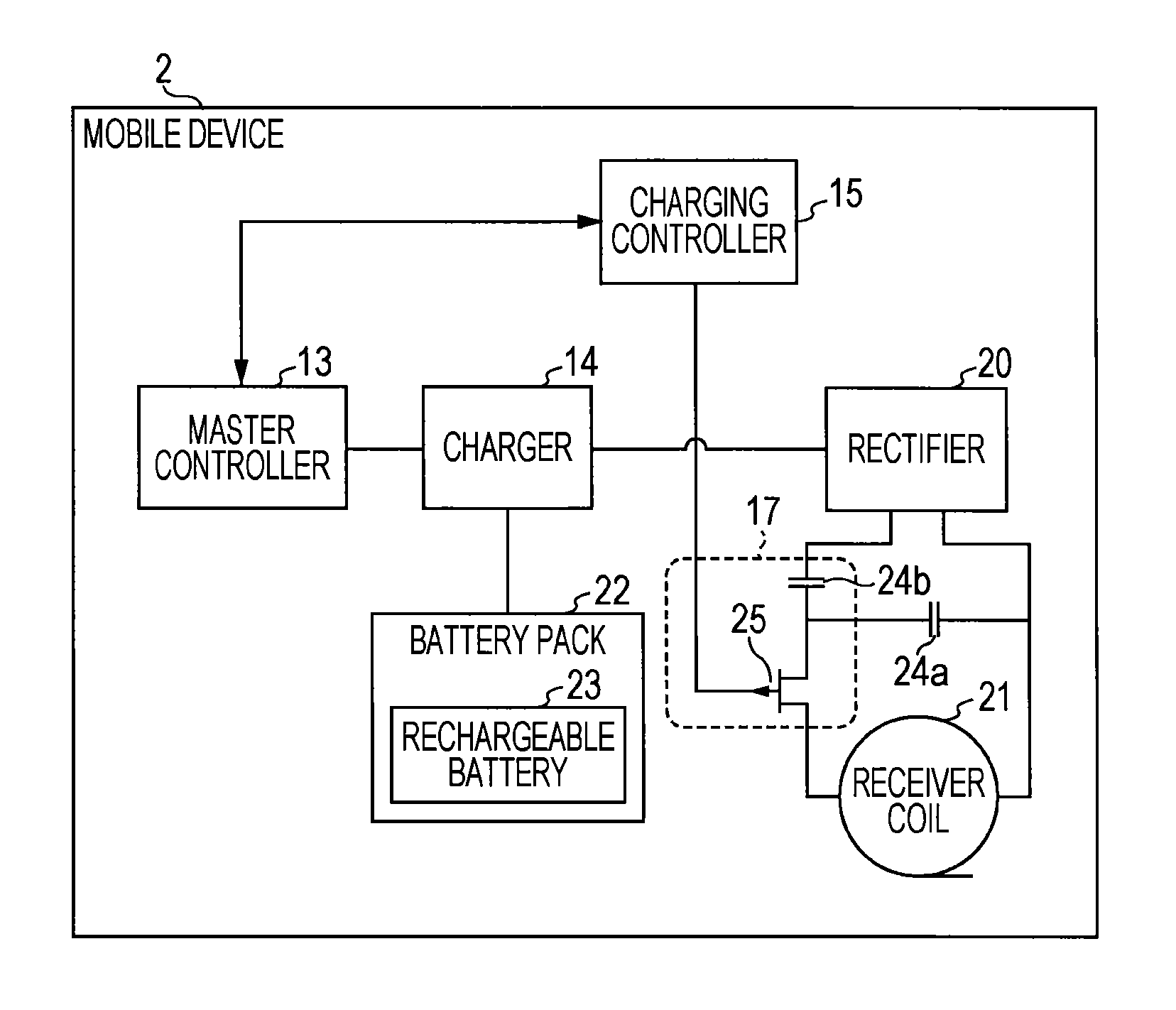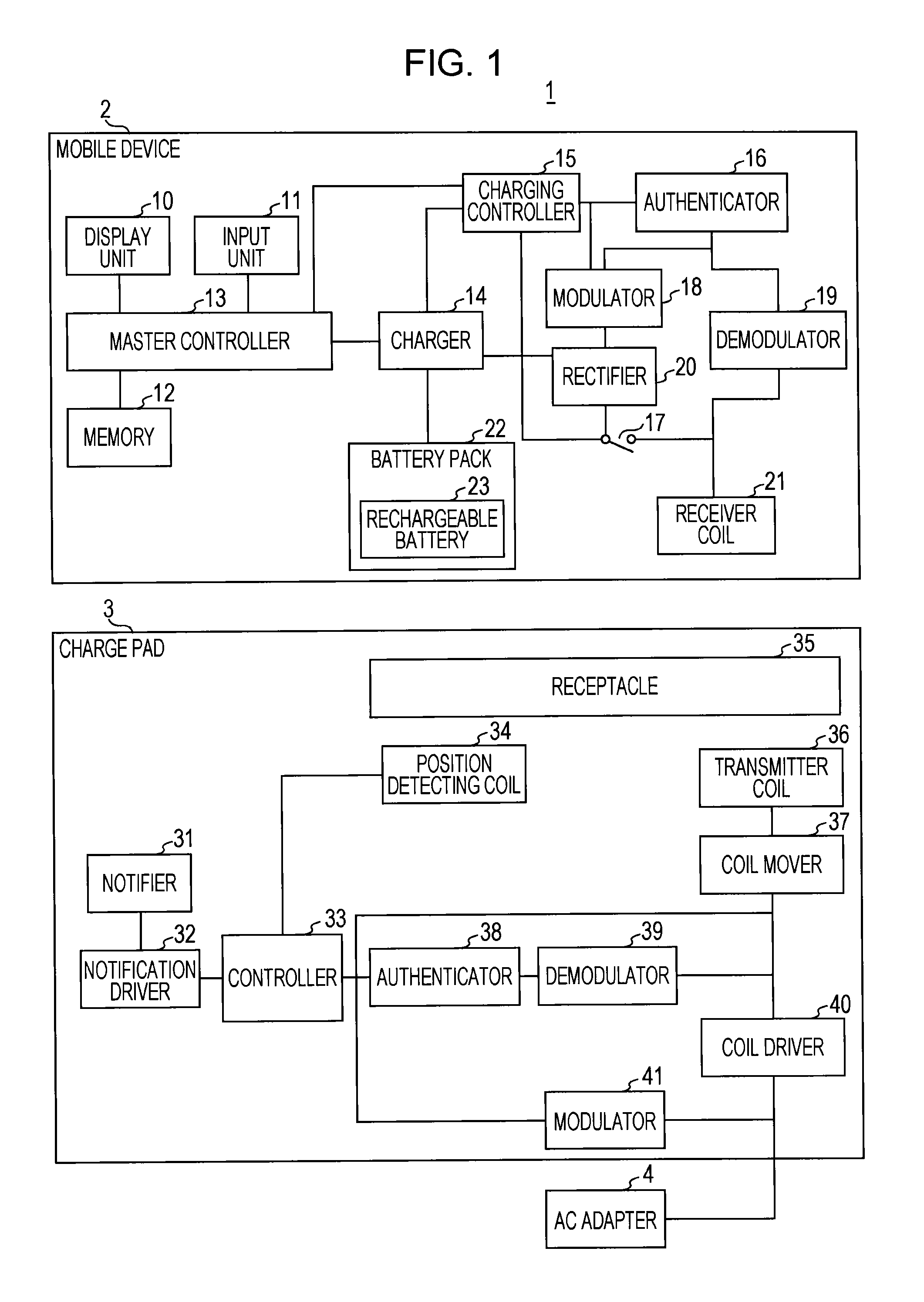Mobile device and charging apparatus
a technology of mobile devices and charging devices, applied in the directions of mobile unit charging stations, transportation and packaging, and battery arrangements, etc., can solve the problem of superfluous operation
- Summary
- Abstract
- Description
- Claims
- Application Information
AI Technical Summary
Benefits of technology
Problems solved by technology
Method used
Image
Examples
first embodiment (
1-1. First embodiment (example of charging a rechargeable battery in a battery pack inserted into a mobile device)
1-2. Modification of first embodiment (example of issuing instructions to start recharging by operational input from the user)
second embodiment (
2-1. Second embodiment (example of charging rechargeable batteries in battery packs inserted into a plurality of mobile devices)
2-2. Modification of second embodiment (example of setting recharge priority order by operational input from the user)
3. Modification of third embodiment (example of charging a rechargeable battery in another mobile device when the charge level of a rechargeable battery exceeds a threshold value)
4. Modification of fourth embodiment (example of setting rechargeable battery charge levels and recharge priority order)
first modification
5-1. First modification
5-2. Second modification
1-1. First Embodiment
[0035][Example of Charging a Rechargeable Battery in a Battery Pack Inserted into a Mobile Device]
[0036]Hereinafter, a first embodiment of the present disclosure will be described with reference to FIGS. 1 to 5. In the present embodiment, an example will be described wherein a charge pad 3 wirelessly charges a rechargeable battery 23 in a battery pack 22 inserted into a mobile device 2, which is used as an information processing device such as a mobile phone or ebook reader, for example. The mobile device 2 adopts a moving coil technique and realizes a charge instructing method that issues instructions to start charging a rechargeable battery to a charge pad 3, which wirelessly charges a rechargeable battery 23 in a mobile device 2 in which a change of capacitance is detected. This charge instructing method is realized by a computer in the mobile device 2 executing a program, with internal blocks operating in coordi...
PUM
 Login to View More
Login to View More Abstract
Description
Claims
Application Information
 Login to View More
Login to View More - R&D
- Intellectual Property
- Life Sciences
- Materials
- Tech Scout
- Unparalleled Data Quality
- Higher Quality Content
- 60% Fewer Hallucinations
Browse by: Latest US Patents, China's latest patents, Technical Efficacy Thesaurus, Application Domain, Technology Topic, Popular Technical Reports.
© 2025 PatSnap. All rights reserved.Legal|Privacy policy|Modern Slavery Act Transparency Statement|Sitemap|About US| Contact US: help@patsnap.com



